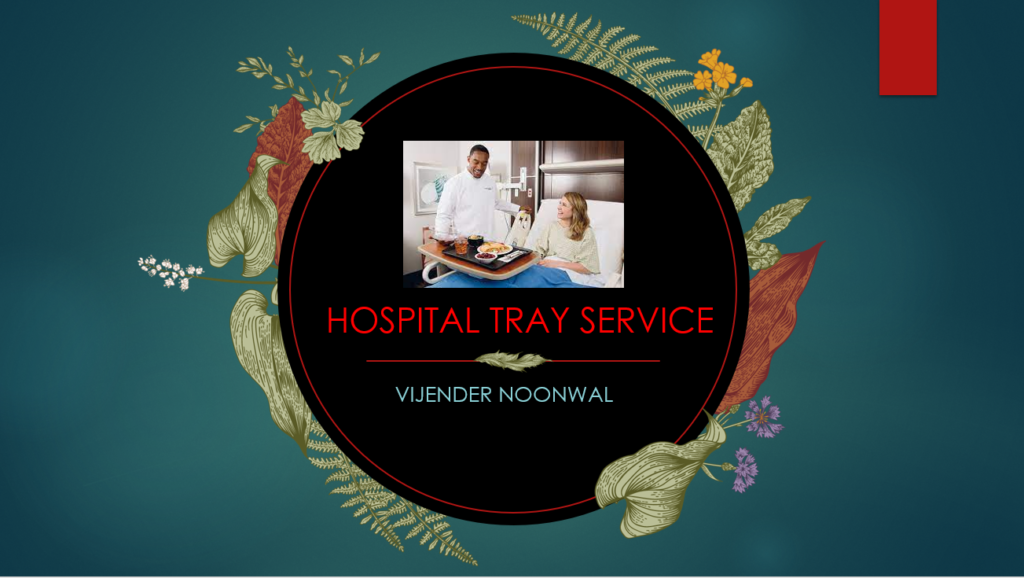
National Health Act 1947, Hospitals were dependent on income long time to change the food service techniques. The food should reach the patient quickly arranged in tray and service done in hospital . Food should look attractive. Food must have the correct nutritional value. The American Ganymede tray system was introduced in 1964.
We already know that the major clients of hospitals are the patients. When in hospitals likes and dislikes become more important.
Types of patients:
- Medical: usually in hospital for a long time
- Surgical: only stay in hospital for a short time
- Geriatric: older people who require hospital treatment and may have special needs.
- Orthopedic: these patients are not normally physically ill but may often be unable to move without help.
- Maternity
- Paediatric: childern
TIME OF MEALS:
The meal timings are totally different from hospital to hospital.
MEAL | TIME |
BREAKFAST | 7:30 – 8:00 AM |
LUNCH | 12 NOON |
TEA | 3:00 – 3:30 PM |
SUPPER Later, Hot Drink | 6:00 – 6:30 PM Anytime between 8:00 and 10:00 pm |
GANYMEDE TRAY SYSTEM
- The Ganymede system is one of several commercially available tray service methods used in hospital catering.
- Basically, individual patient trays are made up on a conveyor system according to the patients’ pre-ordered requirements.
- Differing methods are used to keep the food hot or cold.
- Ranging from the heated or chilled pellet method to specially insulated trays.
- Trays are completed are transported to the wards in ambient cabinets.
- Beverages may be added at ward sites before presentation to the patient.
ADVANTAGES:
- The patients receive their meal presented appetizingly on the plate and piping hot.
- Labour and administration costs can be reduced.
- Time originally spent in the ward ‘plating up’ meals may now be put to better use by completing other duties.
- The patient can select the meal required from a given menu.
MENU
- There is a choice, is given to each patient the day before.
- They the mark off their requirement for lunch, dinner and breakfast for the following day by putting an ‘x” in the appropriate box.
- These menus are then collected and sent to the catering manager.
- All order cards are then collated and a production schedule is drawn up.
- Extra portions are available if required.
- The private patient’s choice of menu is larger and more varied.
SERVICE
- Microwave ovens are also used in hospitals to provide quick re-heating facilities.
- All forms of dishes required can be prepared the day before during ‘off peak’ hours.
- When required the following day, the dishes can be ready for service quickly.
- Help to boost the morale of the patient by continually presenting with well-cooked food.
- Food is attractively plated up and piping hot.